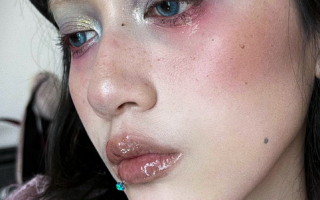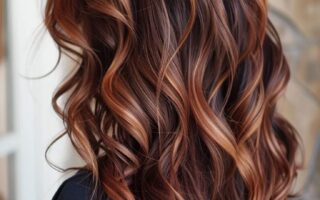This article will tell you all about how to fake “clean girl” skin when you’ve barely slept all week.
Get rid of that sandpaper feeling on your skin
When your skin feels like sandpaper, that dry, tight, rough feeling that makes you want to claw your face off, you’re not dealing with just surface-level dehydration—you’re in a full-on moisture crisis.
It’s usually because your skin’s barrier is shot.
Sleep deprivation, weather, or just skipping the basics like hydration or sunscreen can do that. The idea that you need a 10-step skincare routine to fix it is ridiculous.
You don’t.
You just need something that packs moisture immediately without turning your face into an oil slick.
Here’s the deal: first, stop washing your face with harsh cleansers that strip your skin. You’re drying yourself out more every time you try to “cleanse” the issue away.
You need something creamy and hydrating, not foamy or sudsy.
The goal is to replenish, not scrub your face raw, which only makes the roughness worse.
Once you’ve cleaned up that habit, what you really need is a fast, deep hit of moisture.
And no, I don’t mean slathering on a thick, heavy cream that’ll sit on the surface and do nothing but clog your pores.
You want something lightweight but deeply hydrating, like a hyaluronic acid serum, because that stuff draws in water like a magnet and plumps your skin from within.
And yeah, follow up with a decent moisturizer that locks it in, but again, none of that heavy grease.
If you’re thinking, “I don’t have time to sit around waiting for all this to absorb,” skip the waiting. Just layer it all on while your skin is still damp.
Damp skin drinks up moisture faster and better.
And if you’re desperate to feel some immediate relief, a facial mist with hydrating ingredients can cool everything down and soften that tight, sandpaper feeling instantly.
You’ll notice a difference within minutes, and your skin won’t look like you’ve been through a desert storm.
Stop Under-eye Concealer from Making Eye Bags Look Worse
It’s absolutely normal for your under-eye concealer to make your bags look worse—and frustratingly common, too.
Most people slap on a ton of product under their eyes, thinking they need to “cover” the dark circles, but that’s where things go south.
If your concealer is too thick or matte, it settles into the fine lines and emphasizes texture—especially if your skin is dry from lack of sleep.
You’re also probably applying it too far down into the puffiest part of your eye bags, which highlights them instead of masking them.
How do you fix this?
- Prep the area properly. Before any concealer touches your skin, you’ve got to hydrate—religiously. Dry under-eyes + concealer = disaster. A good eye cream with caffeine (which helps de-puff) is your friend. If you don’t have an eye cream, just use a lightweight, fast-absorbing moisturizer. Give it a few minutes to sink in.
- Go easy on the amount. Less is more. You don’t need to cake on the concealer. Use a thin layer, and only in the areas where the dark shadows are the worst—usually the inner corner of the eye, not all the way down under your whole eye. Avoid dragging it down to where the puffiness is most prominent.
- Use a lightweight, hydrating concealer. Skip the heavy, full-coverage ones if your bags are an issue. A hydrating, light-reflecting concealer will brighten the area without adding weight. You want to diffuse the darkness, not plaster it over.
- Blend like a pro. Use a damp makeup sponge or your ring finger to tap the concealer in—gently. Don’t smear it around, don’t rub it in. Just lightly tap until it’s blended out seamlessly. A sponge will help keep the coverage natural and stop product from caking up.
- Set strategically. If you must set the concealer, use a finely milled, translucent powder sparingly. Use a small brush and tap it on very lightly—no baking or layering up the powder. Just enough to keep it in place without drying out the area or making it look heavy.
- Brighten the inner corner. This is a trick that works wonders: take a little bit of a light, shimmery eyeshadow or a brightening pen and pop it right in the inner corner of your eyes. It diverts attention away from the bags and brings focus to the brighter, fresher parts of your face.
It happens because we overdo it with thick formulas and not enough prep.
But with the right steps—hydration, lightweight coverage, and smart placement—you’ll stop amplifying those bags and start looking fresh-faced, even if you’re running on fumes.
Deal with that post-sleepless breakout without piling on so much concealer you look cakey
Dealing with a post-sleepless breakout without turning your face into a cakey mess is about resisting that instinct to cover every bump with layers of concealer.
Most people make the mistake of thinking more makeup equals less visible acne, but that’s where things go wrong. The more you pile on, the more obvious the texture becomes.
It doesn’t matter if you have the best concealer in the world—if you’re covering a breakout like you’re spackling a wall, it’s going to look like a mask of product sitting on top of your skin.
Instead, you have to get smarter about how you’re approaching it. The real trick is to calm the inflammation before you even think about makeup.
You want to hit that breakout with a soothing treatment right from the start.
Most of the time, post-sleepless acne is aggravated, red, and angry because your skin’s stressed out, dehydrated, and inflamed.
A product like a calming, anti-inflammatory gel with ingredients like niacinamide or even aloe vera will take down the redness and swelling fast.
You’re not trying to dry the spot out completely, because drying it out too much will only make the texture worse when you try to apply makeup.
Once you’ve cooled the breakout down a bit, you need to be strategic with your concealer. Skip the heavy layers and go for something more precise.
Instead of painting your whole face, spot-treat the breakout—dab a tiny bit of a high-coverage but lightweight concealer right on the pimple and gently blend around the edges.
That way, you’re not plastering it everywhere, just neutralizing the redness enough that it doesn’t scream for attention.
And, if you really want to avoid looking cakey, mixing a little bit of moisturizer into your concealer can keep it from getting too thick, making it blend seamlessly into your skin.
But the real trick, the thing most people don’t talk about, is distraction. Instead of focusing on completely erasing the breakout, which usually makes things worse, you focus on pulling attention away from it.
A light-reflecting highlighter on the high points of your face, or even just a well-placed dewy blush, draws the eye to the areas that are glowing and healthy-looking, leaving the breakout in the background.
The more you emphasize the good, the less people notice the bad. So really, it’s not about hiding the breakout under makeup—it’s about making the rest of your skin look so good that no one’s even looking at that spot.
Fight your dark circles (no concealer)
When your concealer starts creasing and making your dark circles worse, it’s because you’re working against your skin instead of with it.
The problem isn’t just the product—it’s the fact that when you’re tired, the skin under your eyes is drier and more prone to creasing.
So when you throw concealer on top of that, all it does is settle into those fine lines and exaggerate the exhaustion you’re trying to hide.
Skip the heavy-duty concealer altogether and switch to a tinted eye cream. Most people don’t think about using an eye cream in place of a concealer, but the right one can work wonders.
You’re looking for something hydrating with a slight tint to it—not the thick, cakey formulas that promise to “cover” everything but only end up looking obvious and tired by midday.
A tinted eye cream hydrates the area, keeps the skin plump, and brightens just enough to camouflage the darkness without settling into lines.
And if you think the tint won’t be enough, this is where color correcting comes in, but in the most subtle way possible.
Most people overdo it with color correctors, but you only need a tiny amount—a peach or salmon-toned corrector works best for dark circles, especially if you have bluish or purple undertones under your eyes.
The idea is to blend it out before you even think about applying anything else. You’re not trying to mask the circles completely, just neutralize the worst of the discoloration.
Here’s the thing that no one really talks about though: setting sprays.
Everyone’s obsessed with setting powders to keep concealer in place, but for tired, creased-prone under eyes, that’s a huge mistake. Powder dries everything out and emphasizes texture.
Instead, a light mist of a setting spray helps to lock things in without sucking the life out of your skin. It gives the concealer or tint enough hold to stay put, while keeping everything hydrated and fresh-looking.
This keeps the makeup from settling into fine lines, leaving you looking more awake, not like you’ve been battling exhaustion all week.
So instead of fighting your dark circles with layers of concealer that only betray you as the day goes on, you focus on hydration and subtle correction.
That’s how you hide them without piling on product that only makes things worse.
The secret to faking clean girl skin when your T-zone is an oil slick even before noon
If your T-zone’s an oil slick by noon, here’s how you fake clean-girl skin: use a hydrating serum that balances your skin’s moisture levels, then a mattifying primer to stop the oil.
The serum prevents your skin from overproducing oil, and the primer keeps you matte longer. For extra hold, lock it in with a light setting spray.
You’re not fighting the oil—you’re controlling it before it even shows up. Done.
Avoid looking like you just threw foundation on a layer of flakiness
If you’re throwing foundation over flakiness that no moisturizer seems to fix, the real issue is your skin’s surface is already messed up before you even start.
Moisturizer alone isn’t enough because flaky skin needs a serious reset, not just some surface-level hydration.
The clever move here is exfoliation—chemical, not physical—because scrubbing isn’t going to do you any favors.
A mild acid toner or serum gets rid of the dead skin without tearing your face up.
After that, you need a barrier repair product, like something with ceramides, to seal your skin and keep moisture in.
This makes your base smooth so the foundation doesn’t cling to patches or look like you just plastered over a cracked wall.
Once you’ve set that right, everything else—moisturizer, foundation—goes on clean and even. It’s not about layering products to hide the problem, it’s about fixing what’s underneath. Simple, but genius.
But if you’re stuck and need that clean girl flawless look in 20 minutes, no fancy products, just trying to work with what you’ve got, here’s the hack: take a damp washcloth, rub it over your face to get rid of that top layer of flakiness—basically a quick, low-effort exfoliation.
Then, slap on your moisturizer or even a tiny bit of facial oil if you have it. That gives your skin enough hydration to fake smoothness.
Now, mix a bit of foundation with your moisturizer so it’s lighter and more forgiving on the rough patches.
This thins out the coverage so it blends better, skipping that caked-on, flaky mess. Apply with your fingers or a sponge—fingers warm up the product so it spreads easier.
The goal is to make everything look like it’s naturally part of your skin. It’s a quick fix that won’t last all day, but it’ll get you through without you looking off.
When your makeup is breaking up around your nose because you can’t stop touching your face
Find a tissue, something lightweight, maybe even a napkin.
Split it so you only have one thin layer. Gently press it over the area where your makeup’s separating to absorb the oil, but don’t rub—just press.
Then, if you have any kind of lip balm or a little moisturizer in your bag, dab the tiniest bit onto your finger and pat it over the area.
This rehydrates the makeup, smooths it out, and keeps it from looking patchy.
You’re basically reviving your makeup with what you’ve got on hand. It’s not about adding product, just making it work with the natural oils and fixing that texture so it looks fresh again, fast.




